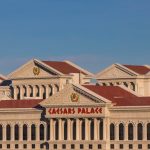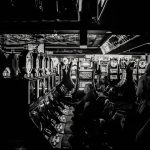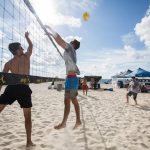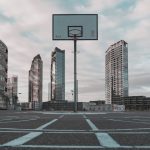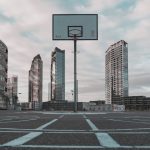Download links
How to install Riding the Waves: The Thrill of Ph630 Surfing APK?
1. Tap the downloaded Riding the Waves: The Thrill of Ph630 Surfing APK file.
2. Touch install.
3. Follow the steps on the screen.
Description
The history of surfing in the Philippines, often referred to as Ph630, is a rich tapestry woven with cultural significance and the evolution of a sport that has captivated both locals and tourists alike. Surfing in the Philippines can be traced back to the early 1970s when it began to gain popularity among the youth in coastal communities. The first surfboards were brought to the islands by American surfers who introduced the sport to local enthusiasts.
Initially, surfing was a niche activity, primarily enjoyed by a small group of adventurers who sought the thrill of riding the waves. However, as word spread about the pristine beaches and consistent swells, more surfers began to flock to the archipelago. By the late 1980s and early 1990s, surfing had firmly established itself as a significant part of Filipino culture.
The emergence of surf competitions and festivals showcased local talent and attracted international attention. Notable surf spots like Siargao, La Union, and Baler became synonymous with quality waves and vibrant surf culture. The annual Cloud 9 Surfing Cup in Siargao, for instance, has become a prestigious event that draws surfers from around the globe, further solidifying the Philippines’ reputation as a premier surfing destination.
This evolution from a modest pastime to a thriving industry has not only transformed local economies but has also fostered a sense of community among surfers, both local and foreign.
Key Takeaways
- Ph630 surfing has a rich history dating back to the 1970s when it first gained popularity among locals and tourists.
- Some of the best surf spots in Ph630 include Cloud 9 in Siargao, San Juan in La Union, and Puraran Beach in Catanduanes.
- Beginners can get started with Ph630 surfing by taking lessons from experienced instructors, practicing proper paddling techniques, and learning how to read the waves.
- Essential equipment for Ph630 surfing includes a surfboard, leash, wax, rash guard, and sunscreen to protect against the sun and waves.
- Safety precautions for Ph630 surfing include wearing a life vest, staying within designated surfing areas, and being mindful of other surfers in the water.
- Ph630 surfing is unique for its combination of warm waters, consistent waves, and vibrant local surf culture, making it a thrilling experience for surf enthusiasts.
The Best Surf Spots in Ph630
Siargao Island: The Surfing Capital
Siargao Island is renowned for its exceptional waves and breathtaking scenery, earning it the title of surfing capital of the Philippines. The iconic Cloud 9 wave, a powerful right-hand reef break, attracts surfers of all skill levels. Its unique shape and consistency make it a must-visit for anyone looking to experience the thrill of riding world-class surf. Beyond Cloud 9, Siargao offers numerous other surf spots, such as Jacking Horse and Daku Island, each providing its own unique challenges and experiences.
La Union: A Laid-Back Surfing Haven
La Union is another hotspot for surfing enthusiasts, particularly for those seeking a more laid-back atmosphere. Known for its friendly waves, La Union is ideal for beginners and intermediate surfers. The beach breaks at San Juan are particularly popular, with consistent swells that cater to various skill levels. The vibrant surf community is complemented by numerous surf schools and rental shops, making it an accessible destination for newcomers to the sport.
Other Notable Surf Spots
Baler, located on the eastern coast of Luzon, is steeped in surfing history and is famous for its long beach breaks.
Pagudpud in Ilocos Norte is known for its stunning landscapes and powerful waves, while Zambales offers a variety of surf breaks suitable for all levels. Each of these destinations offers a unique surfing experience, combining rich cultural heritage and stunning natural beauty.
Tips for Beginners: How to Get Started with Ph630 Surfing
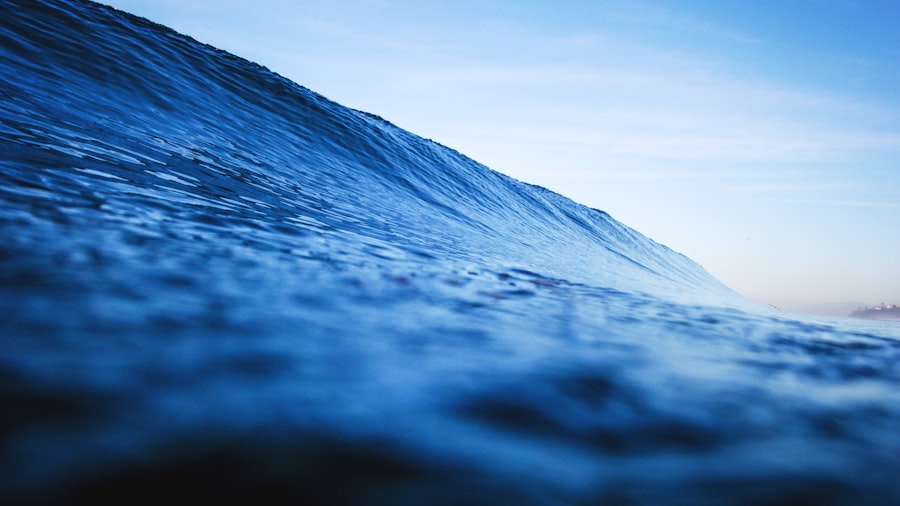
For those eager to dive into the world of Ph630 surfing, starting can be both exciting and daunting. One of the most effective ways to begin is by enrolling in a surf school or taking lessons from experienced instructors. Many surf schools in popular areas like Siargao and La Union offer beginner packages that include equipment rental, safety briefings, and personalized coaching.
These lessons not only teach essential techniques but also instill confidence in new surfers as they learn how to navigate the waves safely. In addition to formal lessons, beginners should familiarize themselves with basic surfing terminology and etiquette. Understanding terms like “takeoff,” “drop-in,” and “lineup” can significantly enhance communication with fellow surfers.
Moreover, respecting the local surf culture is crucial; this includes waiting your turn in the lineup and being mindful of other surfers’ space. Practicing patience and humility will not only improve your surfing skills but also foster camaraderie within the surfing community. Another important aspect for beginners is physical preparation.
Surfing requires a combination of strength, balance, and endurance. Engaging in activities such as swimming, yoga, or strength training can help build the necessary physical attributes for surfing. Additionally, spending time on the beach practicing paddling techniques or simply getting comfortable in the water can ease the transition into actual surfing sessions.
The Equipment You Need for Ph630 Surfing
| Equipment | Description |
|---|---|
| Surfboard | A board specifically designed for surfing in Ph630, typically made of foam or fiberglass. |
| Leash | A cord that attaches the surfboard to the surfer’s ankle, preventing the board from getting lost in the waves. |
| Wetsuit | A garment made of neoprene that provides insulation and protection from the cold water. |
| Wax | A sticky substance applied to the surfboard to provide traction and prevent slipping. |
| Fins | Attached to the bottom of the surfboard to help with stability and maneuverability in the water. |
When it comes to surfing in Ph630, having the right equipment is essential for both safety and performance. The most fundamental piece of gear is, of course, the surfboard. Beginners typically start with a soft-top longboard or a funboard due to their stability and buoyancy, which make it easier to catch waves.
As surfers progress in skill level, they may transition to shorter boards like shortboards or fish boards that offer more maneuverability but require greater skill to ride effectively. In addition to a surfboard, other essential equipment includes a leash, which attaches the board to the surfer’s ankle to prevent it from drifting away after a wipeout. A wetsuit may also be necessary depending on the water temperature; while many areas in the Philippines have warm waters year-round, certain regions may require additional thermal protection during cooler months or early morning sessions.
Rash guards are also recommended to protect against sunburn and chafing from prolonged contact with the board. Accessories such as wax are crucial for maintaining grip on the board’s surface; applying wax before each session ensures that surfers can maintain control while riding waves. For those who plan on spending extended periods in the water, investing in a good pair of surf booties can provide additional comfort and protection against sharp rocks or coral reefs.
Finally, sunscreen is an absolute must; given the tropical climate of the Philippines, protecting your skin from harmful UV rays is essential for enjoying long days at the beach.
Safety Precautions for Ph630 Surfing
Safety should always be a top priority when engaging in Ph630 surfing. Understanding ocean conditions is crucial; beginners should take time to learn about tides, currents, and wave patterns before heading out into the water.
Another important safety measure is knowing one’s limits. While it can be tempting to push oneself in pursuit of bigger waves or more challenging conditions, recognizing personal skill levels is vital for preventing accidents or injuries. Beginners should start with smaller waves and gradually progress as they gain confidence and experience.
Additionally, always surf with a buddy whenever possible; having someone nearby can provide assistance in case of emergencies or unexpected situations. Wearing appropriate safety gear can also enhance protection while surfing. In addition to leashes and wetsuits, helmets may be advisable in certain conditions where there are rocky reefs or shallow waters.
Furthermore, being aware of marine life is essential; while encounters with dangerous creatures are rare in most popular surf spots, understanding how to react if one does occur can help mitigate risks.
The Thrill of Riding the Waves: What Makes Ph630 Surfing Unique

Diverse Surf Spots for All Skill Levels
What sets Ph630 surfing apart from other global surfing destinations is not just its stunning landscapes but also its vibrant culture and sense of community among surfers. The Philippines boasts an incredible diversity of surf spots that cater to all skill levels, making it an inclusive environment where everyone can find their place on the waves. From the powerful barrels of Cloud 9 to the gentle swells of La Union’s beaches, each location offers a unique experience that reflects the natural beauty of the archipelago.
A Culture of Warmth and Hospitality
Moreover, the warmth and hospitality of Filipino culture enhance the overall surfing experience. Surfers often find themselves welcomed by local communities who are eager to share their love for the ocean and their knowledge of surfing. This sense of belonging fosters connections that transcend borders; many travelers return year after year not just for the waves but also for the friendships formed along the way.
Breathtaking Scenery and Unforgettable Moments
The thrill of riding waves in Ph630 is further amplified by its breathtaking scenery—crystal-clear waters framed by lush palm trees and dramatic cliffs create an idyllic backdrop that enhances every session on the board. Whether it’s catching sunrise sessions at dawn or enjoying sunset rides as day turns into night, each moment spent surfing in this tropical paradise becomes etched in memory.
A Premier Surfing Destination
In conclusion, Ph630 surfing offers an unparalleled blend of adventure, community spirit, and natural beauty that captivates both seasoned surfers and newcomers alike. With its rich history rooted in cultural significance and an ever-growing reputation as a premier surfing destination, it continues to attract wave riders from around the globe seeking their own slice of paradise on these pristine shores.
If you’re a fan of surfing, you may also be interested in checking out this article on Super Mario Run 3.0.9. Just like catching the perfect wave, navigating through the levels of this popular mobile game requires skill, precision, and timing. So whether you’re shredding the waves or jumping over obstacles as Mario, both activities require focus and determination.
FAQs
What is surfing?
Surfing is a water sport in which a person rides a board on the crest and face of a breaking wave.
What equipment do I need for surfing?
The basic equipment for surfing includes a surfboard, leash, wetsuit, and wax. Optional equipment may include fins, traction pads, and a surfboard bag.
What are the different types of surfboards?
There are several types of surfboards, including shortboards, longboards, fish boards, and funboards. Each type is designed for different wave conditions and surfing styles.
What are the best surfing spots in the world?
Some of the best surfing spots in the world include Pipeline in Hawaii, Jeffreys Bay in South Africa, Teahupo’o in Tahiti, and Banzai Pipeline in Oahu, Hawaii.
What are the safety precautions for surfing?
Safety precautions for surfing include wearing a leash, using proper surf etiquette, being aware of rip currents, and knowing your limits in the water. It is also important to be mindful of other surfers and beachgoers.

